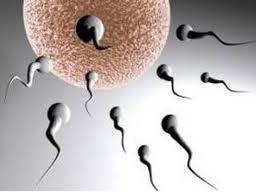导读:日本大阪大学和美国夏威夷大学的研究小组日前利用小鼠实验发现,精子至少能够两次通过卵子周围的透明带。这一发现纠正了对受精过程的传统认识,有望以很少的精子进行人工授精,并且对治疗不孕发挥作用。

透明带是指哺乳动物卵子生成期间形成的、围绕在卵子周围的一层透明的膜状保护层,在受精中起重要作用。精子接触围绕在卵子周围的透明带时,精子尖端顶体与其发生反应,使精子能够穿过透明带而受精。根据以前的定论,已发生一次顶体反应的精子无法再次穿越透明带,因而无法受精。
研究小组通过基因操作培育出一种特殊的雌性小鼠,这种小鼠能够使精子穿过自己卵子的透明带,但无法与卵子结合。这种雌鼠与普通的雄鼠交配8小时之后再采集卵子,发现很多精子穿过了透明带,但是没有办法受精,都积存在卵子周围。
研究小组取出积存的精子,放到正常的小鼠卵子边,数小时之后观察时发现,精子再次穿过了透明带,与卵子结合而受精,受精卵也能发育成正常的小鼠。研究小组认为,这说明比起以前的看法,顶体反应的持续时间更长,因此能够两次透过透明带。
大阪大学教授冈部胜指出:“这个实验弄清了神秘的受精的部分机制,并且颠覆了以前的定论。研究如果取得进展,也许能够用少量精子就进行人工授精,并且用于治疗不孕。”这一研究的相关论文已刊登在美国《国家科学院学报》上。

Protein disulfide isomerase homolog PDILT is required for quality control of sperm membrane protein ADAM3 and male infertility
Keizo Tokuhiro, Masahito Ikawa, Adam M. Benham, and Masaru Okabe
A disintegrin and metalloproteinase 3 (ADAM3) is a sperm membrane protein critical for both sperm migration from the uterus into the oviduct and sperm primary binding to the zona pellucida (ZP). Here we show that the testis-specific protein disulfide isomerase homolog (PDILT) cooperates with the testis-specific calreticulin-like chaperone, calsperin (CALR3), in the endoplasmic reticulum and plays an indispensable role in the disulfide-bond formation and folding of ADAM3. Pdilt−/− mice were male infertile because ADAM3 could not be folded properly and transported to the sperm surface without the PDILT/CALR3 complex. Peculiarly we find that not only Pdilt−/−, but also Adam3−/−, spermatozoa effectively fertilize eggs when the eggs are surrounded in cumulus oophorus. These findings reveal that ADAM3 requires testis-specific private chaperones to be folded properly and that the principle role of ADAM3 is for sperm migration into the oviduct but not for the fertilization event. Moreover, the importance of primary sperm ZP binding, which has been thought to be a critical step in mammalian fertilization, should be reconsidered.








